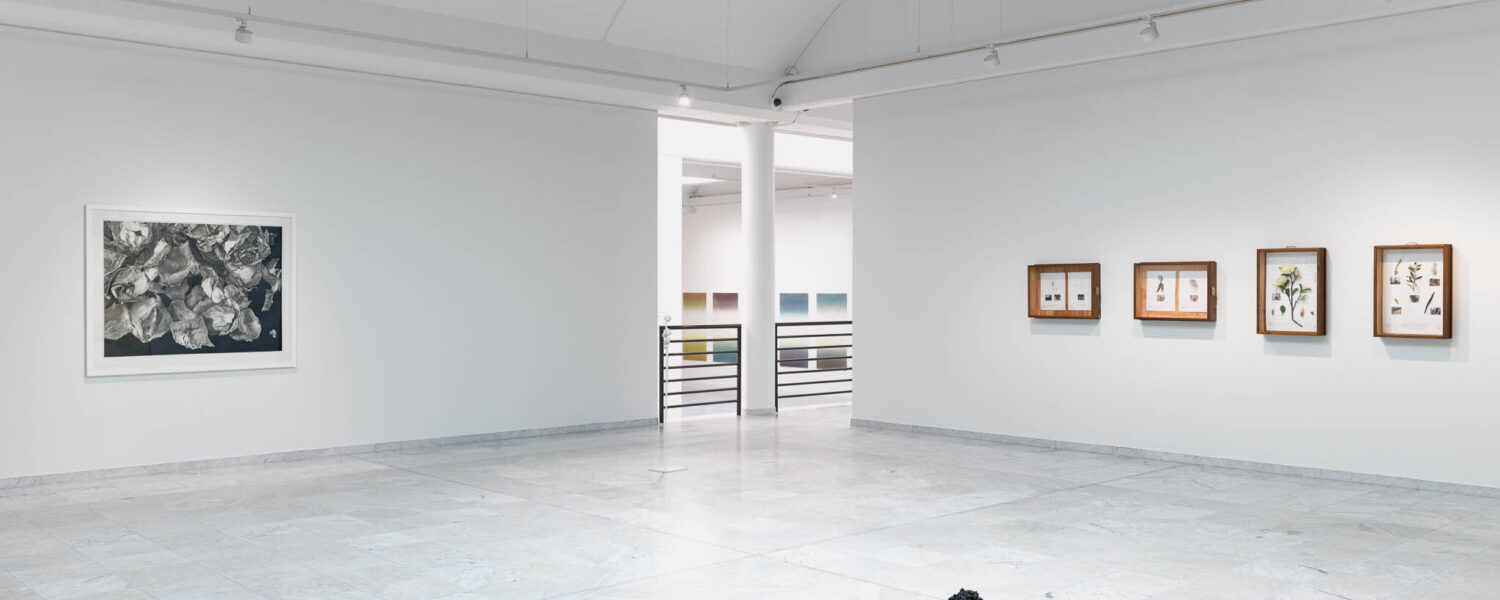To build a collection
New Acquisitions
The collection
Stavanger Art Museum’s collection belongs to the whole community. The art preserved in the museum – which we administer, do research on, exhibit and make accessible – belongs to you and me and future generations. One of the museum’s most important tasks is therefore to develop the art collection for posterity.
The work of developing Stavanger Art Museum’s collection began in 1865. For much of its history it grew almost solely through gifts. Before the 1990s, it was only by exception that the museum could buy works.
In 1984 the art collector Halvdan Hafsten gave his collection to the museum. The gift was instrumental for the building of the premises in which you now stand. Before this museum opened in 1992, the collection was kept at Stavanger Art Society at Madlaveien 33.
Since the late 1990s, the artist Jan Groth has given works to the museum, as part of the collection set up in his and Steingrim Laursen’s names. This collection has added an international dimension to the museum.
Today, Stavanger Art Museum/MUST administers a collection consisting of about 3,000 works. The museum’s purchasing committee buys new works for the collection and evaluates proposed gifts and deposits (long-term loans). It follows a purchasing strategy approved by the museum’s board of directors. You can read about the purchasing strategy on the museum’s website.
How does the collection grow?
As a public museum, our mandate involves preserving things from the past, but it also entails documenting and reflecting the present. New works of art are assessed based on the contents of the existing collection and how we want it to develop. There are, for example, far more male artists represented in our collection than female artists, and we have few works by Sámi artists and other minorities. We therefore strive to create a better representation in the collection and to challenge the established art-historical categories.
Stavanger Art Museum has a special responsibility to collect art created in and around our region. At the same time, the museum also tries as much as possible to collect important international art. This often requires greater financial resources than the museum has through its own budgets, so extra funding is needed.
The museum’s staff are art historians and professionals with diverse specialisations and competencies. They follow developments in the field of art and contribute to the production of art-historical writing through working with the collection and preparing exhibitions. In these ways, the staff use their competencies for the benefit of the art collection.
In contrast to works in a private collection, which the owner can sell for sake of making new purchases, the works that enter a public collection remain there for posterity. This is why it is important that gifts and deposits are evaluated according to the same criteria as purchased works. In the exhibition, you will find the argumentation supporting the purchase of each individual work.
Why this exhibition now?
We are a publicly funded museum, and we collect works of art that become part of our shared cultural heritage. It is therefore important, at regular intervals, to present the works we have chosen to add to the museum’s collection. The last time this was done was in 2017, in connection with the anniversary exhibition A 25-Year-Old.
In the last year, Norwegian museums for art, craft and design have received extra funding from the Ministry of Culture as a consequence of the COVID-19 pandemic. The funds are earmarked for ‘the purchase of contemporary art, craft and design from galleries and exhibition venues in Norway, or, if necessary, directly from the artist’. The aim of the ministry’s largess is to ‘stimulate creative artistic activity in all parts of the country’. The purchases are to be linked to artists who mainly live and work in Norway.
Stavanger Art Museum has received 4 million kroner in extra funding for the purchase of Norwegian contemporary art. All the works must be bought and reported before the end of 2021 – a project that continues.
In this exhibition you can see a selection of the works that have been added to the museum’s holdings in the four years since we last presented an account of the collection’s development. The exhibition features several works bought with the extraordinary funds the museum has received in the last year, but it also includes some of the recent gifts and deposits.
In preparing the exhibition, we have tried to create meaningful encounters between the works, both visually and in terms of content. The exhibition gives insight into an art collection that reflects a wealth of voices, perspectives and stories made manifest in contemporary art, with particular emphasis on artistic practices linked to the region. We present a collection that weaves together many stories, concerns and evaluations, both historical and contemporary. Our hope is that you will experience the art’s relevance and value, as individual works and as part of the public art museum’s collection.
Artists included in the exhibition are:
Alberto Baraya, Andreas Eriksson, Ask Bjørlo, Aslaug Juliussen, Elin Melberg, Elisabeth Haarr, Else Leirvik, Else Marie Hagen, Erling Valtyrson, Gerd Tinglum, Ginko Adachi, Hasegawa Sadanobu, Herman Mbamba, Hori Cho, Hori Sennosuke, Ingeborg Kvame, Inger Bruun, Ito Nisaburo, Jacob Sømme, Jens Erland, John Josefsen, Jone Kvie, Kitty Kielland, Linda Lamignan, Maiken Stene, Marianne Heier, Natasja Askelund, Ogata Gekko, Olaf Lange, Per Christian Brown, Snøfrid Hunsbeth Eiene, Sverre Bjørn-Nielsen, Sverre Koren Bjertnæs, Thoralf Gjesdal, Torbjørn Rødland, Tsukioka Yoshitoshi, Urd Pedersen, Utagawa Kunisada, Utagawa Yoshiiku, Vilhelm Tveteraas, Øystein Dahlstrøm.
